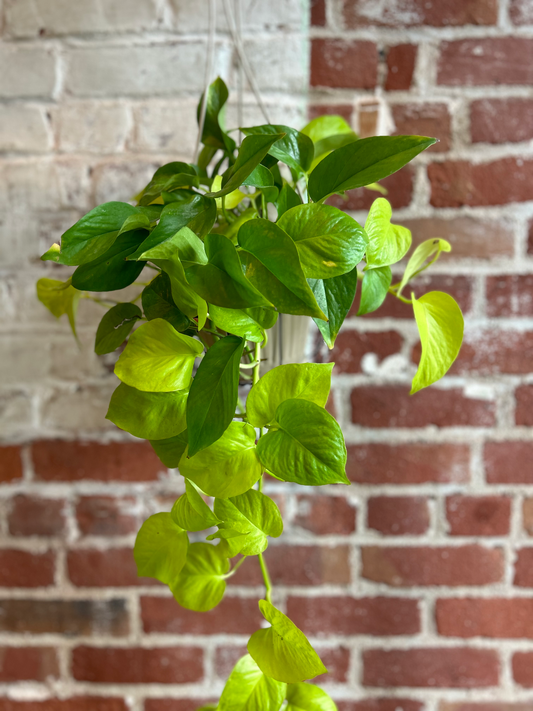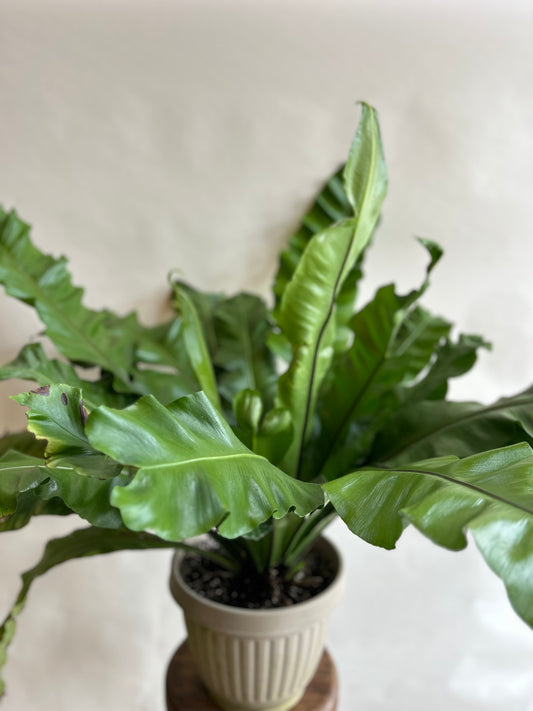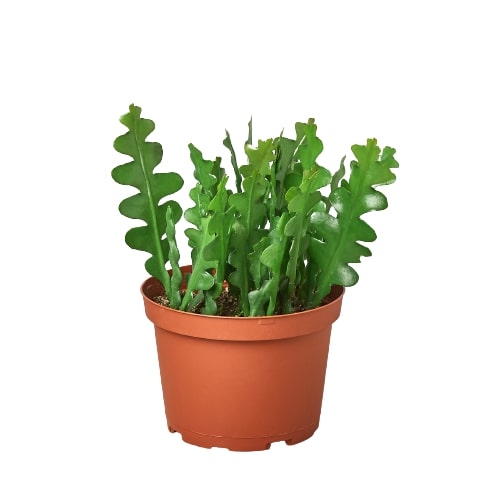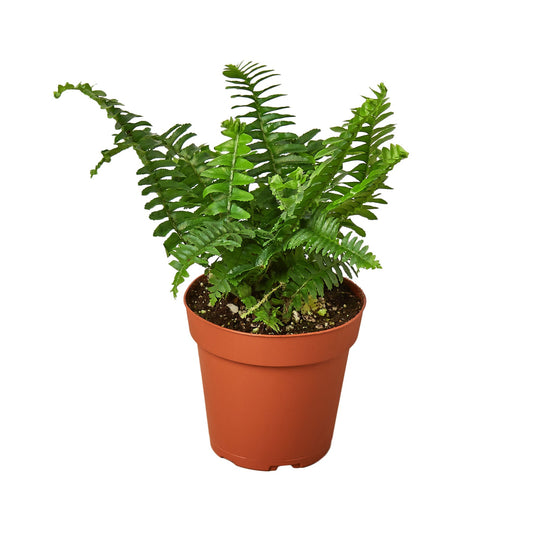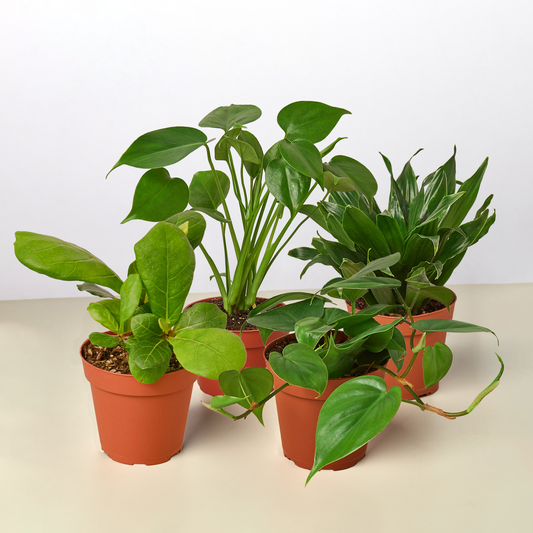How To Support Your Bonnie Spider Plant
Cafe Planta Team
If you've got a Bonnie Spider Plant, you're in for a treat. This delightful plant is not just easy on the eyes with its curly, cascading leaves, but it's also one of those houseplants that doesn't demand too much fuss. Yet, like any living thing, a little support goes a long way in helping it thrive.
In this article, we’ll walk through the essentials of caring for your Bonnie Spider Plant, from choosing the right pot to understanding its light and water needs. We’ll also touch on how to tackle common pests and even a little design inspiration to integrate this beauty into your home. Let's get started!
Understanding Your Bonnie Spider Plant
The Bonnie Spider Plant, also known as Chlorophytum comosum 'Bonnie,' is a variegated variety of the classic spider plant. What sets it apart is its uniquely curled leaves, giving it a distinct, lively appearance. This plant is a favorite among plant lovers because of its forgiving nature and ability to thrive in various conditions.
Why is it so popular, you ask? Well, for starters, it’s a resilient plant that can adapt to different environments. Whether you're a seasoned plant parent or just starting out, the Bonnie Spider Plant is a fantastic choice. It’s not only attractive but also known for its air-purifying qualities—an added bonus for any home.
To truly support your Bonnie Spider Plant, it’s important to understand its preferences. While it's low-maintenance, knowing a bit about its likes and dislikes can make all the difference in keeping it lush and healthy.
Choosing the Right Pot and Soil
The pot you choose for your Bonnie Spider Plant is more important than you might think. It needs to provide good drainage to prevent root rot, which is a common issue for many houseplants. Consider a pot with drainage holes at the bottom, allowing excess water to escape. This will help you avoid the dreaded situation of overwatering.
When it comes to soil, a well-draining potting mix is your best bet. You can either purchase a commercial potting mix labeled for houseplants or create your own. If you're feeling adventurous and want to make your soil mix, combine equal parts of regular potting soil, perlite, and coarse sand. This combination ensures good aeration and drainage, giving your plant the best foundation to grow.
Once you’ve selected your pot and soil, the next step is planting. Gently remove your Bonnie Spider Plant from its current container, taking care not to damage the roots. Place it in the new pot, fill in with fresh soil, and water it lightly to help it settle in. And there you have it—a solid start for your plant's new home.
Getting the Light Just Right
Light can be a bit of a Goldilocks situation for spider plants. They prefer bright, indirect light, which means they thrive in a spot that gets a lot of light without being in the direct path of the sun's rays. Too much direct sunlight can scorch their leaves, while too little light can lead to leggy growth.
Where should you place your Bonnie Spider Plant, then? A room with an east or west-facing window is usually ideal. These windows get plenty of light during the day, but not the harsh midday sun. If you notice the leaves losing their vibrant color or becoming thin, it might be time to reassess its location.
That said, these plants are quite adaptable. They can tolerate lower light conditions, although their growth may slow down a bit. If you're working with limited natural light, you might consider supplementing with a grow light to give them a little boost.
Watering Wisely
Watering is one area where many plant parents can go wrong, but don't worry—it's not as tricky as it seems. The key to watering your Bonnie Spider Plant is to let the soil dry out a bit between waterings. Overwatering can lead to root rot, which is a common ailment for these plants.
During the growing season, which is typically spring and summer, you might find yourself watering once a week. In the cooler months, you can reduce this to every 10 to 14 days. A good way to check if your plant needs water is by sticking your finger into the soil about an inch deep. If it feels dry, it's time for a drink.
When you do water, make sure to soak the soil thoroughly until water drains out of the bottom of the pot. This ensures the roots get enough moisture, but also that excess water doesn't linger and cause issues. Remember, it's always easier to add more water than to deal with the aftermath of overwatering!
Feeding Your Bonnie Spider Plant
While the Bonnie Spider Plant isn't a heavy feeder, a little boost during the growing season can promote healthy growth. A balanced, water-soluble fertilizer is a great choice. You can apply it every month or so during spring and summer, but hold off in the fall and winter when the plant's growth naturally slows.
If you're new to fertilizing, don't stress too much. Just remember to dilute your fertilizer to half the recommended strength to avoid overwhelming your plant. Over-fertilizing can lead to salt buildup in the soil, which can harm your plant's roots.
If you notice your plant's growth slowing or its leaves looking a bit lackluster, it might be a sign that it's time for a little feeding. But as always, moderation is key. A light touch with fertilizer will keep your Bonnie Spider Plant looking vibrant and healthy.
Dealing with Pests and Common Issues
Even though the Bonnie Spider Plant is relatively pest-resistant, it’s not completely immune. Common pests include spider mites, aphids, and mealybugs. If you notice any tiny invaders, don't panic. There are straightforward ways to handle these nuisances.
For minor infestations, a spray of water can often dislodge pests from the leaves. If the problem persists, consider using an insecticidal soap or a neem oil spray. These are effective and gentle on the plant, making them ideal for home use.
Aside from pests, you might encounter a few other issues. Brown tips on the leaves are often a sign of underwatering or low humidity. You can trim these tips with clean scissors to keep your plant looking tidy. Increasing the humidity around your plant, perhaps with a humidifier or by placing a tray of water nearby, can also help.
Remember, no plant is perfect all the time, and a few brown tips or occasional pests are nothing to worry about. With a little attention, your Bonnie Spider Plant will bounce back in no time.
Pruning and Propagating
Pruning your Bonnie Spider Plant is not only about keeping it looking good. It also encourages new growth and keeps the plant healthy. Trim away any dead or damaged leaves to allow the plant to focus its energy on new growth. Use sharp, clean scissors to make cuts close to the base.
One of the joys of having a spider plant is the ease with which you can propagate it. The plant produces offshoots, often called "spiderettes" or "pups," which can be potted up to create new plants. Once the spiderettes have small roots, simply snip them from the mother plant and pot them in fresh soil. Keep the soil moist, and they'll take off in no time.
Propagation is not only a fun project, but it’s also a great way to share your plant with friends or expand your own collection. Plus, it’s a fantastic way to get more plants without spending a dime!
Integrating Bonnie Spider Plants into Your Home Decor
Integrating plants into your home decor is not just about aesthetics. It's about creating spaces that feel alive and inviting. The Bonnie Spider Plant, with its quirky, curly leaves, offers a playful touch to any room.
Consider hanging your plant in a macrame hanger near a window, where it can catch the light. The cascading effect of the leaves will add a dynamic element to your space. Alternatively, place it on a shelf where the leaves can drape down, adding interest to your decor.
Another idea is to use it as a centerpiece on a dining or coffee table. Its unique foliage can serve as a conversation starter, and it pairs well with a variety of decor styles, from bohemian to modern. The key is to experiment and see what works best for your space!
Creating a Plant-Friendly Environment
Your Bonnie Spider Plant will thrive when the environment is just right. While they’re adaptable, a few tweaks can make a big difference. Consider the temperature and humidity levels in your home. Spider plants prefer temperatures between 65-75°F (18-24°C) and moderate humidity.
If your home tends to be dry, especially during winter months, a humidifier can be beneficial. Alternatively, you can place a small tray of water with pebbles near your plant to increase humidity naturally.
Also, avoid placing your plant near drafts or heating vents, as these can cause the leaves to dry out. By creating a stable environment, you're setting your plant up for long-term success.
Final Thoughts
Supporting your Bonnie Spider Plant involves a mix of understanding its needs and integrating it into your lifestyle. With the right pot, soil, light, and care, your plant can thrive and bring a touch of nature into your home.
At Cafe Planta, we're passionate about plants and helping you find the perfect match for your home. Whether you're looking for new plant friends or need some advice, we're here to help. Feel free to email us or reach out on Instagram. Let's grow together and make your home a plant paradise!


